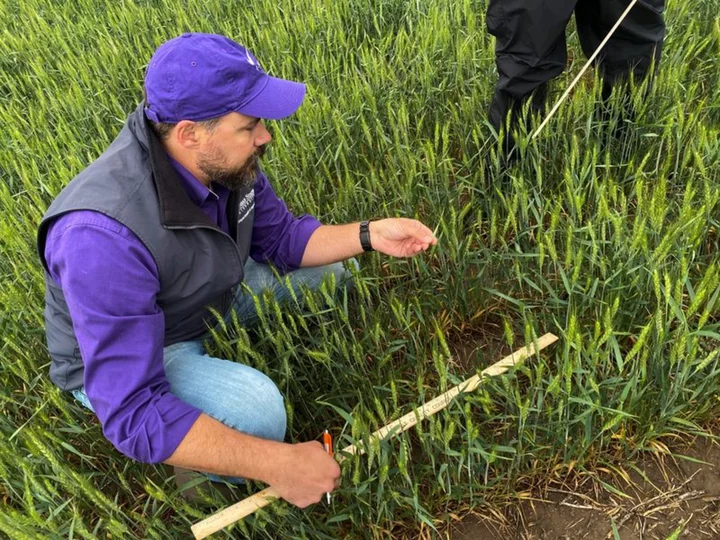By Tom Polansek
WICHITA, Kansas Farmers in Kansas, the biggest U.S. producer of wheat used to make bread, are abandoning their crops after a severe drought and damaging cold ravaged farms.
They are intentionally spraying wheat fields with crop-killing chemicals and claiming insurance payouts more than normal, betting the grain is not worth harvesting, Reuters found on a three-day tour of the state. Other growers are turning over dismal-looking fields to cattle for grazing.
Abandoning fields will lead to a smaller U.S. wheat supply in the world's No. 5 wheat exporter, with stocks seen falling to a 16-year low. High rates of abandonment deal an economic blow to farm towns and force wheat buyers to adjust procurement plans by buying the staple grain elsewhere.
Nationally, winter-wheat farmers plan to abandon 33% of the acres they planted, the highest percentage since World War I, the U.S. Department of Agriculture said in a May 12 report.
Kansas farmers are expected to abandon about 19% of the acres planted last autumn, up from 10% last year and 4% in 2021, according to the report. But farmers, grain traders and representatives of major food companies who traversed the state on an annual crop tour last week warn of an even greater percentage of unharvested acres.
Crop conditions point toward an outcome similar to 1989, when farmers did not harvest 28% of the wheat they planted, said Justin Gilpin, chief executive of the Kansas Wheat Commission and a tour leader.
"You have a wheat crop that didn't come up," he said.
Soaring prices for hay also pressure wheat farmers not to harvest their fields for grain so they can be fed to cattle, Gilpin said.
Kansas farmers are expected to produce just 191.4 million bushels of wheat this year, the smallest since 1963, according to the latest monthly government forecast. Participants on the Wheat Quality Council tour projected an even smaller harvest of 178 million bushels.
Uncertainty over the size of harvest largely centers on how many acres will be abandoned, grain buyers and tour leaders said. Some farmers with dead wheat will plant sorghum in another attempt at crop production this spring.
Insurance providers must have a chance to appraise fields before crops are destroyed or abandoned, and adjusters are busy visiting fields.
Frahm Farmland, a major grain producer in Colby, in western Kansas, expects it will not harvest about 47% of the roughly 9,500 acres (38.45 square kilometers) of wheat planted, said Christian Wilson, who does field operations and agronomy for the farm.
At least 60% of the crop is expected to be abandoned around Lakin, in southwestern Kansas, said Gary Millershaski, a farmer and scout on the tour.
PAINFUL CROP DEATHS
PureField Ingredients, operator of a wheat protein facility in Russell, Kansas, will need to buy wheat from other parts of the state due to high abandonment in western Kansas, said Evan Backhus, commodities manager.
Farmers who pull the trigger on terminating their crops do so after watching fields struggle throughout the months-long growing season.
"It's kind of like watching a loved one go through a terminal illness," said Clay Schemm, a farmer in Sharon Springs, Kansas, near the Colorado border.
Parts of Oklahoma are suffering too. In six northern counties, an estimated 65% to 70% of the crop will not be harvested, said Mike Schulte, executive director of the Oklahoma Wheat Commission.
While farmers get some financial protection from insurance, local businesses are at risk when acres are abandoned, as fewer crews of harvesters come through the region, where they would normally spend money at diners and hotels, Schulte said.
The poor crop may leave Kansas State University's College of Agriculture with less funding than its typical $1 million a year from the Kansas Wheat Commission because the commission is funded by sales of wheat, Dean Ernie Minton said.
"We may not be able to do as much," Minton said. "It slows down the whole lifecycle of wheat research."
(Reporting by Tom Polansek; Additional reporting by Julie Ingwersen in Chicago; Editing by Caroline Stauffer and Marguerita Choy)









